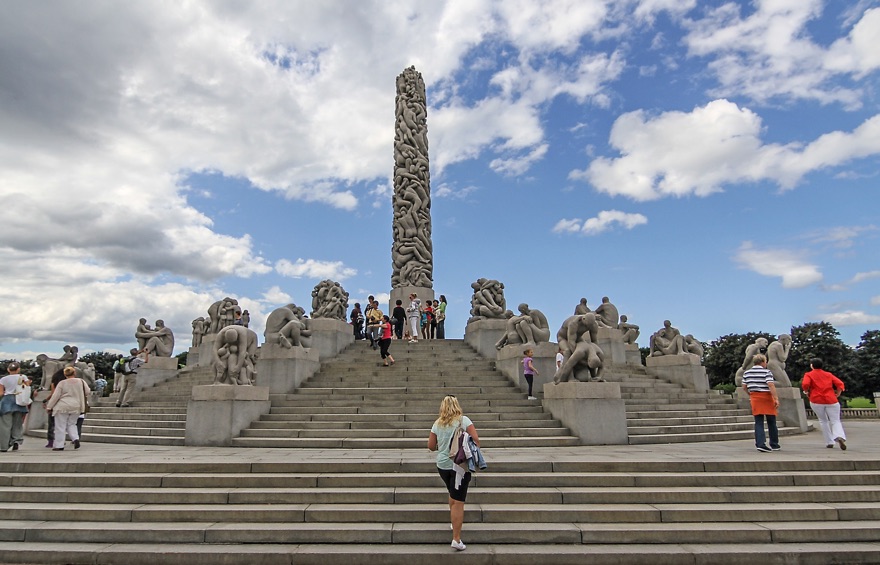
It's the number one free tourist attraction in Norway—and with good reason! Take a closer look at the visually stunning Vigeland sculptures of Oslo, Norway.
Oslo is a city of sculptures. But even with several other sculpture parks on offer, one stands head and shoulders above the rest.
Introducing the work of Gustav Vigeland
More than 200 sculptures by Gustav Vigeland (1869-1943) in bronze, granite and wrought iron are on display in the park, which Vigeland himself designed.
The park is a must on any Oslo travel itinerary. Walk through the park in just ten minutes, or spend an entire morning examining the eerie sculptures, many of which take human form.
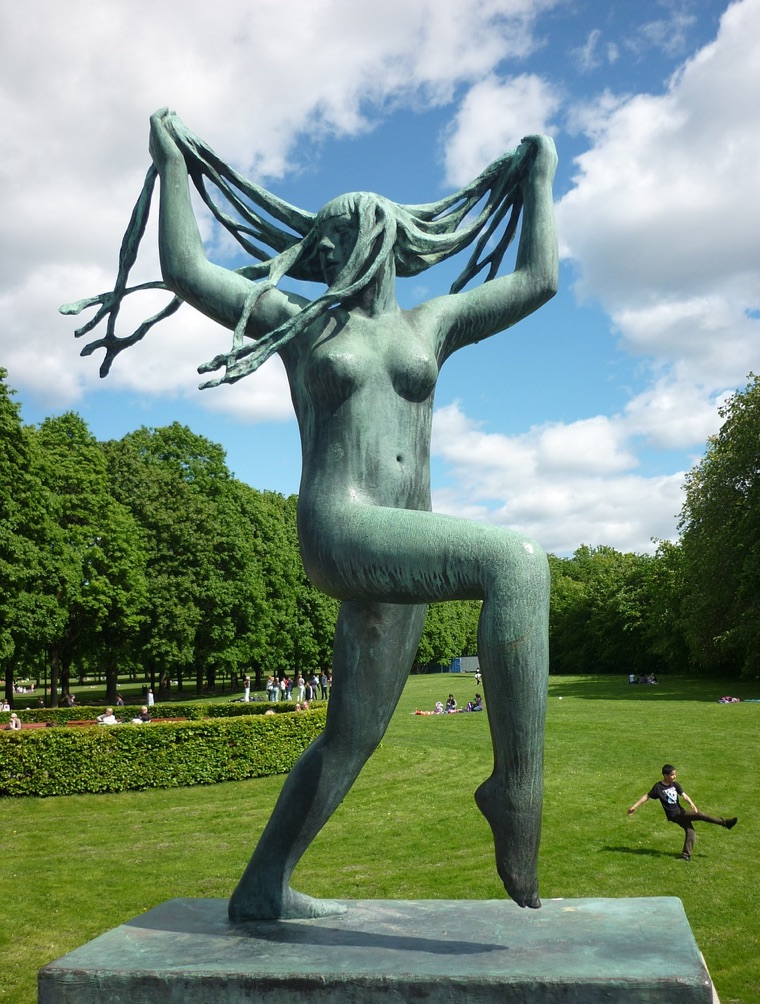
The sculpture park is set within Frogner Park, Oslo’s biggest inner city green space filled with locals walking dogs and playing frisbee.
Vigeland Park through the seasons
I've had the pleasure of visiting the park at all times of year. For sheer enjoyment, the summer is best as the warmer temperatures and lack of rainfall make a longer stay more pleasant. That being said, the weather in Oslo can never be guaranteed!
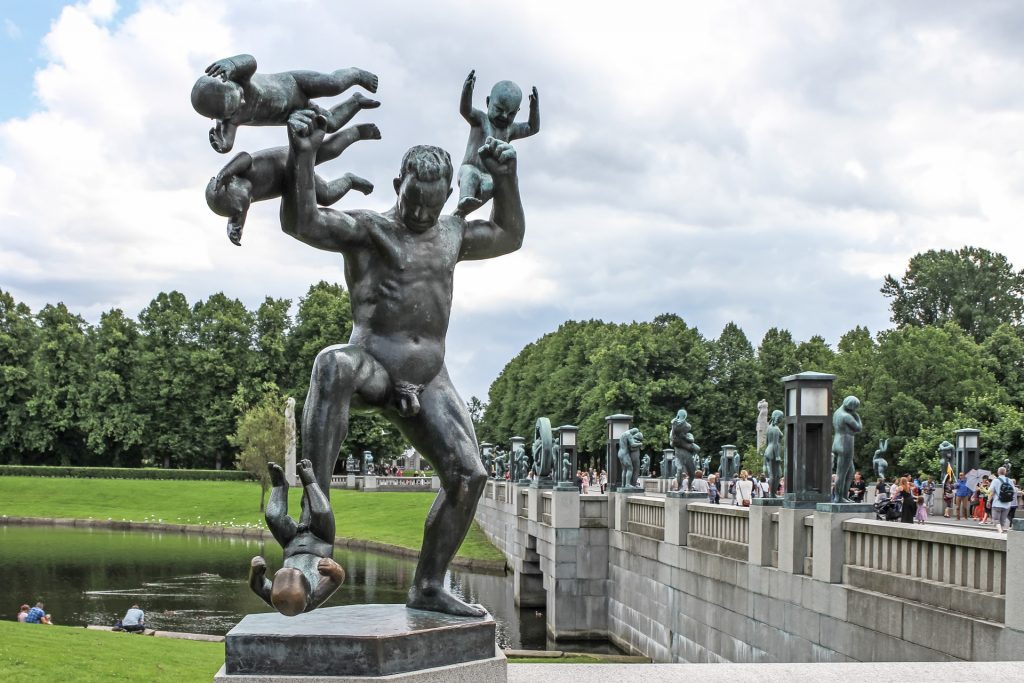
But the park is well worth a visit in the autumn or winter too. The autumnal colours are stunning but all too short, while the winter adds an eerie atmosphere and makes you appreciate the artwork in a completely different way. The park is always open, so if you're visiting Oslo in the winter that's no reason not to plan a trip to the park.
The Vigeland Park monolith
The centrepiece of the park is the famous monolith, made from a single piece of granite. Construction of the 14-metre high monument began in 1924 when Gustav Vigeland modelled it in clay in his studio in Frogner, but the actual sculpture took three masons 14 years to finish.
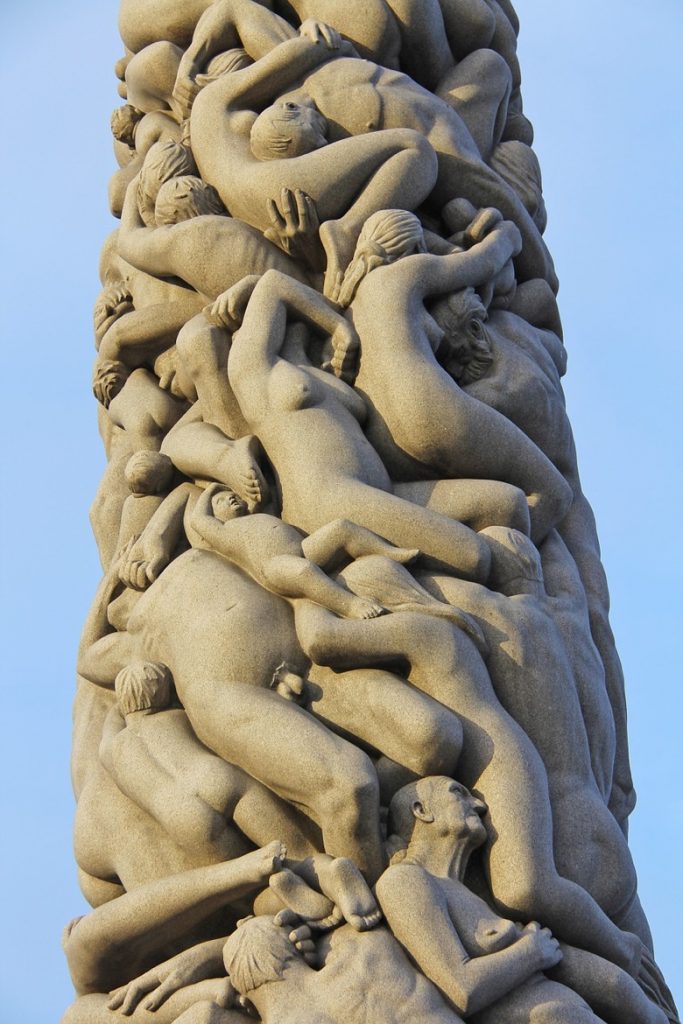
Tourists often flock to the monolith which can be seen from anywhere in the park. It stands at the top of some stairs, which are also home to many other granite statues, all taking human form.
Read more: Fun Facts about Oslo
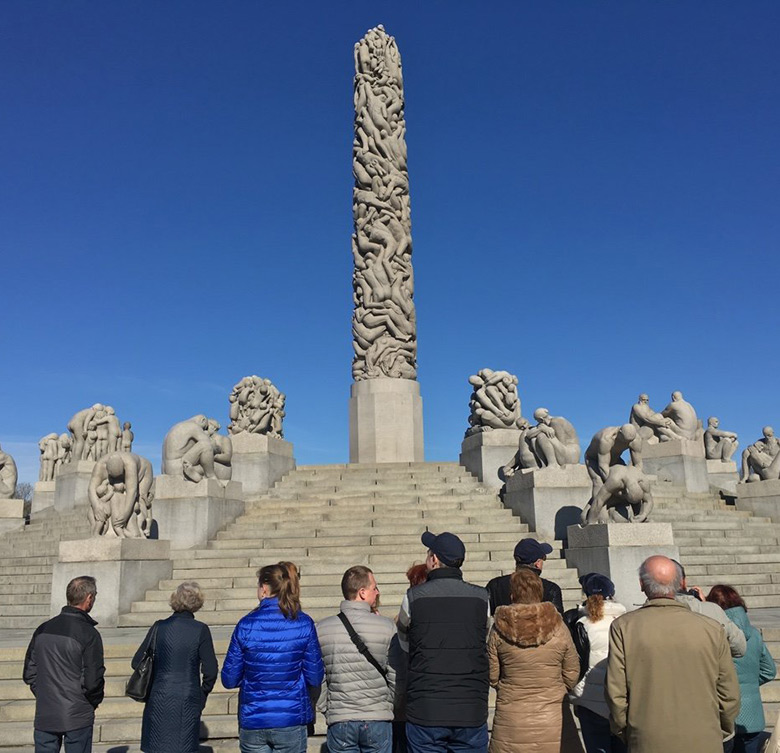
Other popular sculptures
But there's plenty more to see then just the monolith! The park is full of a wide variety of sculptures, some comedic, others more pensive. One British newspaper dubbed the collection “the weirdest statues in the world”! It won't take long for you to find a favourite.
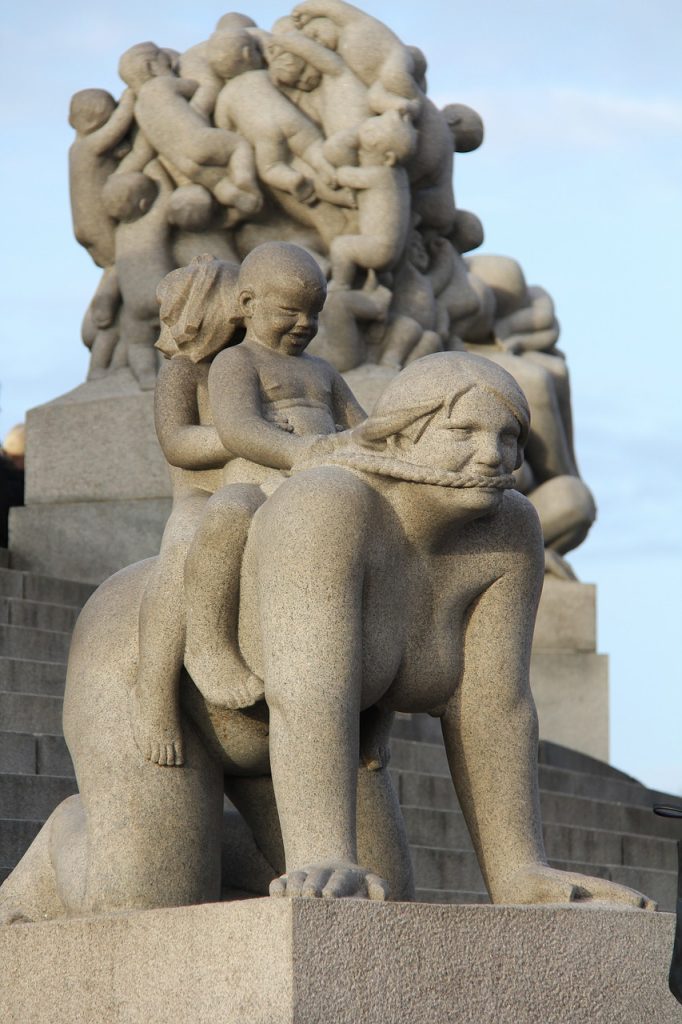
Some art critics consider Vigeland's work to be an expression of fascist sympathies. I can't say I see it, myself. It’s hard to agree on a summer’s day with the fountain flowing and locals mixing happily with tourists from every corner of the world.
According to a biographer, one of Vigeland’s goals was to represent what people have in common, regardless of race and culture. What we are supposed to see are timeless humans, naked in body and mind.
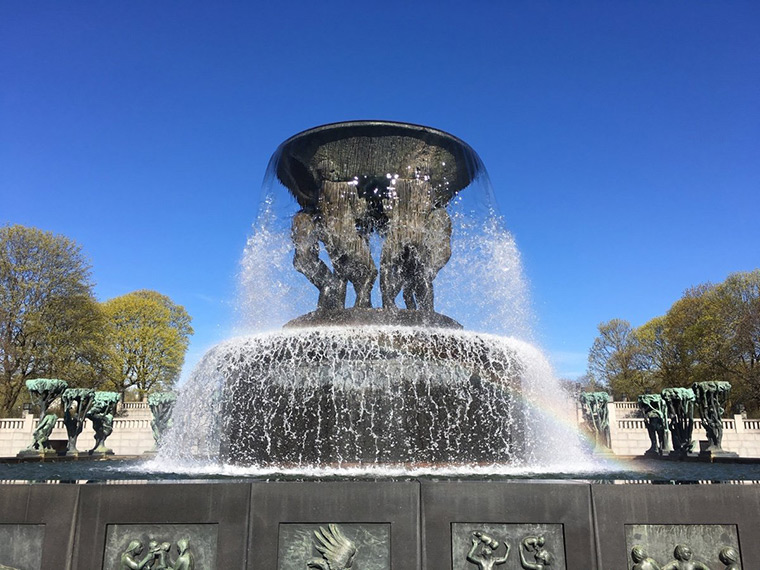
Another of the park's memorable sights is the fountain, surrounded by 20 smaller statues. The sculpture was originally intended for Norway’s parliament building, with a plaster model was exhibited as early as 1906.
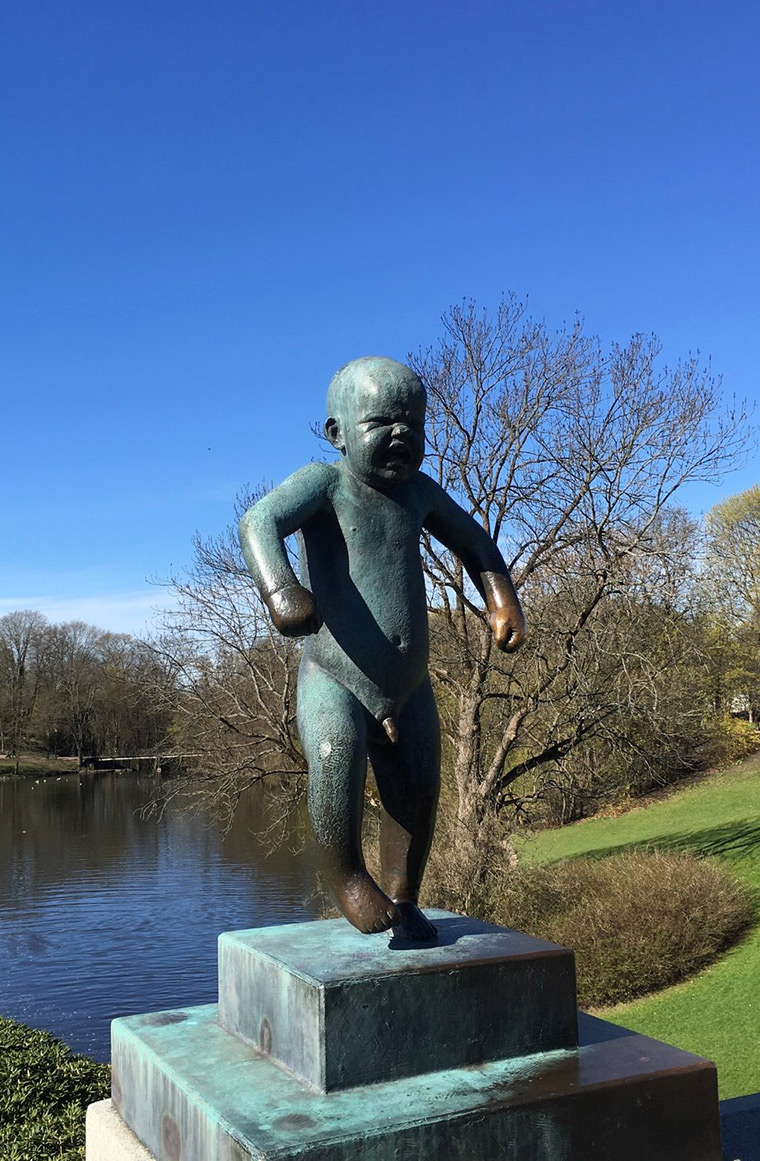
The so-called “angry baby” is perhaps the park's most famous work, after the monolith. His left hand is worn because it seems legend has it that you will get good luck from rubbing it. That, or probably catch some germs…
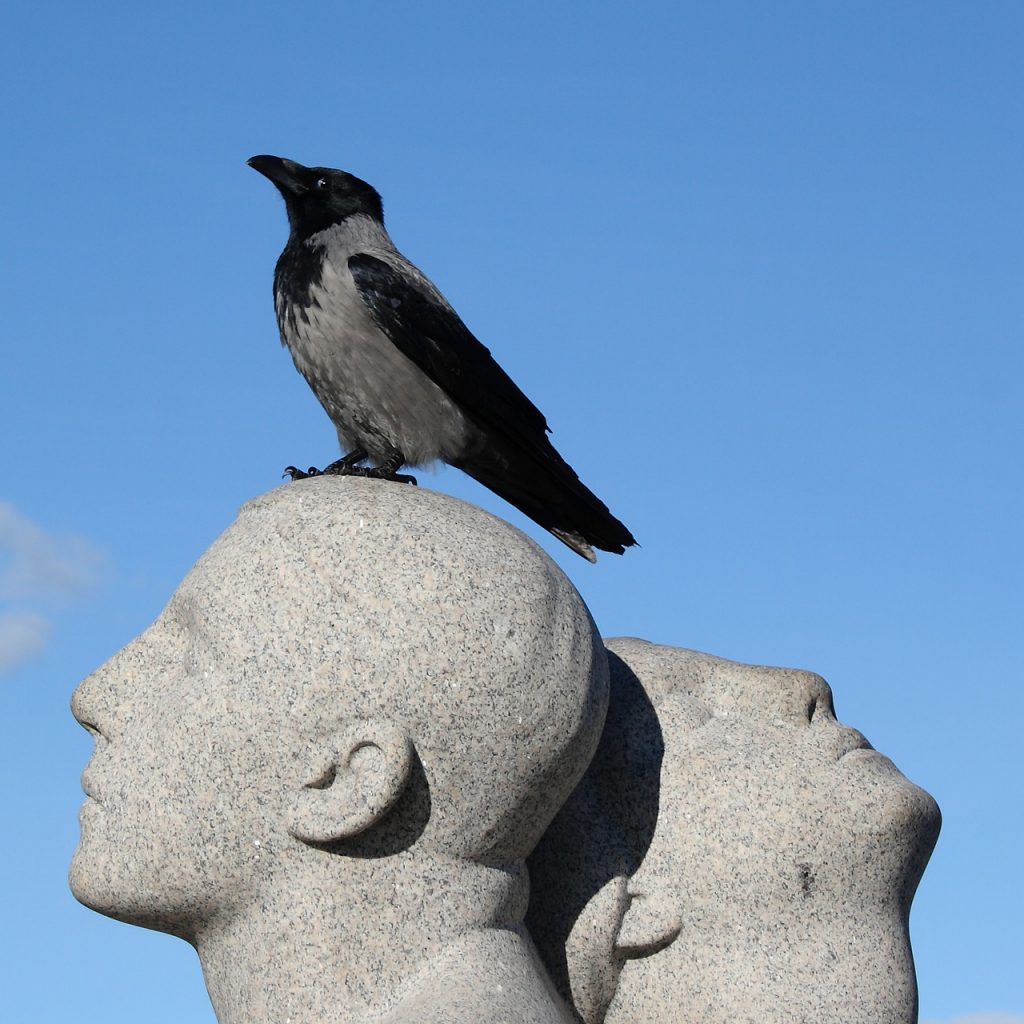
The open green spaces of Frogner Park, Oslo’s biggest city playground, are filled with locals walking dogs, barbecuing pølser (hot dogs), and playing Frisbee. The City Museum is set back in the park’s southern corner and worth a look due to the fabulous 18th-century atmosphere of Frogner Manor.
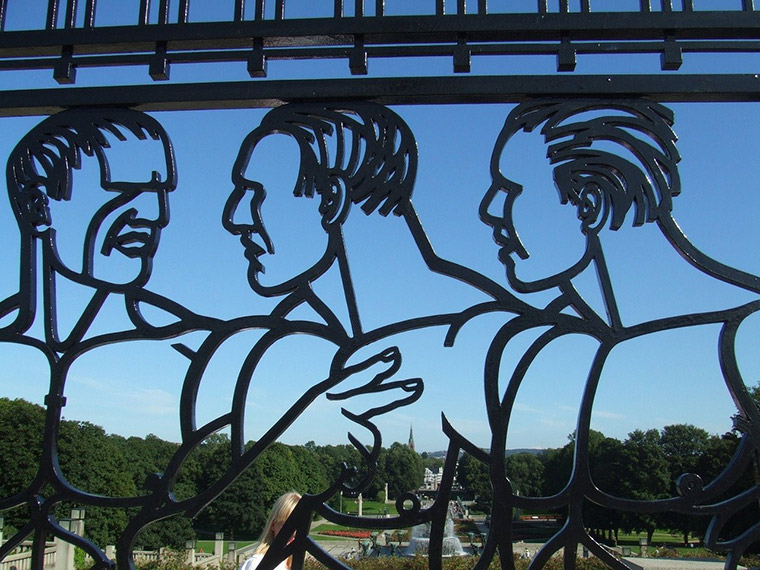
To reach Vigeland Sculpture Park, you can take the T-Bane to Majorstuen and take a 10-minute walk down Kirkeveien, or take the tram to the Vigelandsparken stop. Alternatively, you can walk to the park in about 30 minutes from the Royal Palace through the leafy neighbourhood of Frogner.
And a little something for Pinterest:
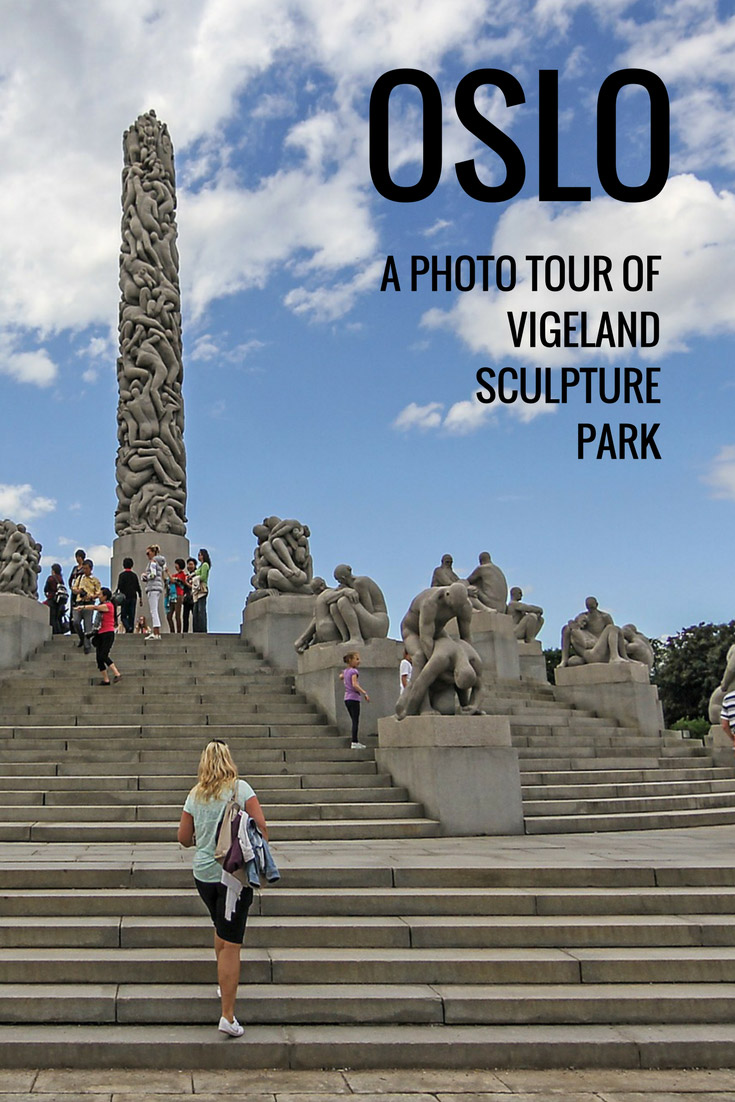


There are so many naked statues. To me, it is vulgar. If it is a major tourist attraction, do people normally visit Norway for baby-moon and honeymoon?